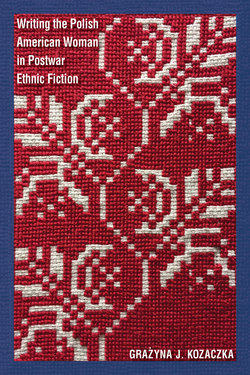Читать книгу Writing the Polish American Woman in Postwar Ethnic Fiction - Grażyna J. Kozaczka - Страница 16
На сайте Литреса книга снята с продажи.
Оглавление3
Suzanne Strempek Shea’s Gendered Ethnicity in the 1970s and 1980s
I
THE AMERICAN LITERARY SCENE during the final decades of the twentieth century was energized by the work of a group of women writers who hailed from strong ethnic traditions and whose fiction probed the complex experiences of immigrants and their children caught between the ethnic and the dominant host cultures. Their female characters have often been placed in an unenviable position of double jeopardy, since they not only represent a marginalized ethnic group but also face prejudice due to their gender. In constructing a female perspective, fiction writers such as the Chinese Americans Gish Jen, Maxine Hong Kingston, and Amy Tan, the Native American Louise Erdrich, the Puerto Rican Judith Ortiz Cofer, the Dominican American Julia Alvarez, and the Polish American Suzanne Strempek Shea have forced many of their characters into a process of reinventing both their gender and ethnic identities within a class-conscious environment. The American-born Suzanne Strempek Shea represents a generation of Polish ethnics often far removed from the immigrant ancestors who left the old country, mostly for economic reasons, and came to the United States among the large waves of late nineteenth- and early twentieth-century east European peasant immigrants who eventually developed a strong working-class culture. Thus, for Strempek Shea, like for other Polish American writers such as Leslie Pietrzyk and Ellen Slezak, the ethnic home and the working-class neighborhood in the United States (not in Poland) become the primary sites for the invention and performance of gendered ethnicity. Four of Strempek Shea’s five novels, featuring a Polish American female protagonist situated within a strongly ethnic community during the 1970s and 1980s, clearly continue the ethnic and gender conversation initiated by Monica Krawczyk decades earlier. Strempek Shea’s twenty- or thirty-something women find themselves in a situation similar to that of their literary grandmothers in Krawczyk’s short stories as they engage in an often-difficult process of constructing their Polish and American identity, while at the same time pushing against the gender restrictions imposed on them by the patriarchy embedded within the family structure and supported by the Roman Catholic belief system.
In her first three novels, Selling the Lite of Heaven (1994), Hoopi Shoopi Donna (1996), and Lily of the Valley (1999), Suzanne Strempek Shea chronicles the small-town Polish American neighborhoods found among the slightly dilapidated working-class settlements of New England, very much like Krawczyk, who focused on similar communities within urban centers three or four decades earlier. In such “insular social worlds”1 ethnicity gained visibility, as Richard Alba suggests, “in the names and nature of their small businesses, in the style and exterior decoration of their housing, and of course in the skin color, speech, and surnames of their residents.”2 A strong sense of nostalgia for the familiar and comfortable albeit far from idyllic life within such an ethnic enclave infuses Strempek Shea’s writing about a fragile world endangered both from within and from without. Suburbanization, the disappearance of the family farm, divorce, and intermarriage all seem to add urgency to her writing, as if a record must be completed before even the memories disappear. Ironically, the sensitively drawn female characters who are caught within the tension created by the often-conflicting values and demands embedded in the Polish traditions represented by their immigrant parents or grandparents and the seductive promises of American society become themselves the agents of change. As they struggle for an understanding of self, their ethnic consciousness becomes intricately intertwined with gender awareness, and in the constant process of constructing gendered identity the heroines of her novels reinvent the Polish American community.
